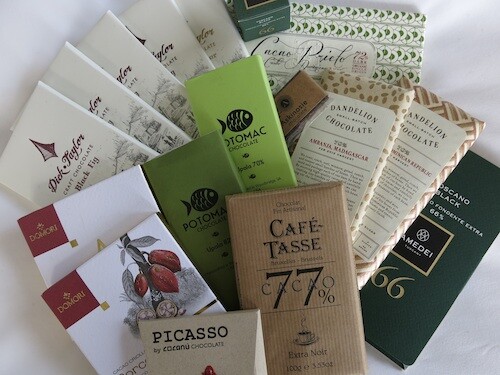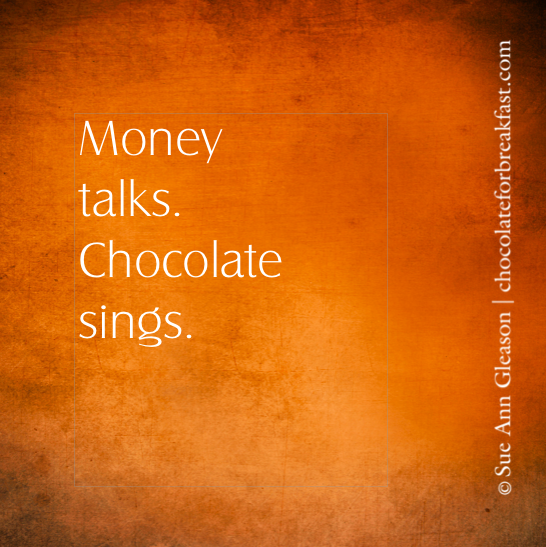February. The month of hearts. And romance. The month lovers swoon and women without a beloved feel a slight pang of, “No chocolates for me this year.”
I remember the biggest, most ostentatious display of chocolates I ever received. I was dating a rather linear thinker at the time. Romance was not part of his vocabulary; gifts were practical.
So you can imagine the delight I felt the night he picked me up from the airport carrying a heart-shaped container the size of Texas. Brachs in a Box. I can’t remember actually eating those little heart-shaped chocolates, though I may have.
I probably whispered a gracious thank you, eyes sparkling, heart pounding. Surely this display of affection meant a budding romance was about to bloom into something bigger, something brighter, something … well, sexier. I had this yearning to be deeply cherished, spoiled, serenaded with song and, perhaps, even poetry.
And somehow all those dreams materialized in a box of chocolates. Sadly, ‘Brachs in a Box’ isn’t even chocolate. (We’ll get to that.) So how do we elevate the chocolate eating experience, maybe even make it a little healthier?
First, avoid the fancy boxes and wrappings and do a little research. All chocolates are not created equal. Choose the very best chocolate available to you. This is not necessarily the chocolate you see on the shelves at your local grocery store. Here are a few of the suggestions for choosing chocolate:
Consider the Source: Is it ethically sourced? Much of the commercial chocolate you find in grocery stores comes from slave labor. You want to keep your eyes wide open here. If I’m lucky enough to meet the chocolate maker I ask, “Where do you source your chocolate? Is it organic? Is it fair trade?” That’s also what I look for on a label. I stay away from chocolate labels that boast “healthy chocolate” and look instead, at the ingredient list. If I see cocoa beans and cane sugar, I know I am in really good shape. For the most part I try to find small batch chocolate production where every aspect of the chocolate making process is controlled by the chocolate maker, from bean to bar. It matters.
Consider the Number: The percentage shown on many dark chocolate products is the percentage, by weight, of all ingredients derived from the cacao bean. The cocoa solids contribute flavor and the cocoa butter contributes the smooth texture. So the percentage is really the percent of actual chocolate in the product. A higher percentage means more chocolate, and less of the remaining ingredients, primarily sugar. A higher percentage also means a more intense chocolate flavor. However, we don’t want to make the all-too-common mistake of equating quantity (cocoa percentage) with quality. There is far more to chocolate than a number.
There is No Joy in Soy: Soy lecithin isn’t a necessary ingredient in chocolate. It allows manufacturers to more easily blend or “emulsify” ingredients that would otherwise behave like oil and water. It also allows them to reduce the amount of cocoa butter in their chocolate bar and replace it with other vegetable fats in order to save money. That’s reason enough to stay away from chocolate that has soy lecithin on the label.
Ditch the Dairy: Dairy binds with the antioxidants in chocolate and prevents them from nourishing your cells. If you want to take full advantage of the health properties of chocolate, you want to invest in dairy-free dark chocolate.
But even more important than all of the buzzwords and phrases (gluten-free, soy-free, dairy-free, fair trade, antioxidant-rich, vegan, etc.), learn to appreciate the artistry and intention that goes into the crafting of chocolate that is worth savoring.
Here are just a few of my favorites:

You see the one in the middle? Potomac Chocolate. There’s a funny story around that chocolate. I have great respect for chocolate makers who create a product from “bean to bar” and I travel the country looking for these chocolate makers. Would you believe I discovered this chocolate in Portland, Oregon and it’s produced right here in my own backyard? Based in Woodbridge, VA, Potomac Chocolate was founded in 2010, and is the first bean-to-bar chocolate maker in the Washington, DC area. Ben Rasmussen’s words: “I handcraft chocolate from bean to bar in ridiculously small batches.” Music to my ears.
I invite you to “Google” bean to bar chocolate makers in your area and see if there are any hidden gems in your vicinity. And, the next time you’re in a gourmet chocolate carrying establishment, see if they carry Potomac; it’s stellar.


I think I half knew a few of these facts Sue Ann, but after reading your post, I feel properly informed. Thank you. X
Dang it, Sue Ann! Hubs and I JUST finished saying to one another, “No gaudy chocolate this year, right?” but now my mouth is watering. 🙂 Green & Blacks opened my eyes to what chocolate could be, and I’ve never settled for less since. I’ve just learned that Nestle and others use SLAVES in the making of their chocolate! You can be sure I will source my chocolate carefully, especially after your informative post. Thank you!
my husband savors and adores his dark chocolate, and was the first to open my eyes to its rich beauty. at first i devoured every bit i could get. and then? i’d had enough. for awhile. dark chocolate and i took a long hiatus from each other. i’m beginning to introduce it back into my life. slowly. during special moments.
Ah yes, this article brings me back to the delicious conversation we had about this time last year, and the level of education you provided. Why do not more of us know that “bean to bar” is a thing as delectable and varied as “farm to table”?
Because of your teaching, I discovered 2 excellent shops here in Montreal, and was initiated into the fruity notes of Madagascar chocolate, and the earthy tones in the Vietnamese. I limit my chocolate intake for a variety of reasons, and will now never even consider it, unless it’s the real deal.
I did not know that about the dairy and antioxidants! That is fascinating. I immediately googled local “bean to bar” chocolate makers where I live. It looks like we don’t have one, but it led me to an article about the difference between chocolate-makers and chocolatiers. As a dark chocolate lover, I’m ashamed to say I never knew the difference. Such a great post!
Thank you, Sue Ann, for this wonderful education on how to choose quality chocolate. There is so much confusion when it comes to this delectable indulgence. I will certainly be examining labels and keeping what you mentioned in my mind. Hmmm, I wish I had some chocolate right now…
What a great chocolate education! I’ve always been a “pull from the grocery store shelf” kind of chocolate eater, but you make me yearn to find some stellar chocolate and luxuriate in it. I think I’ll do exactly what you suggest and let Google point me in the right direction. 🙂 Thanks for the information.
What a fantastic post! The information is very useful. Thank you for sharing this here.